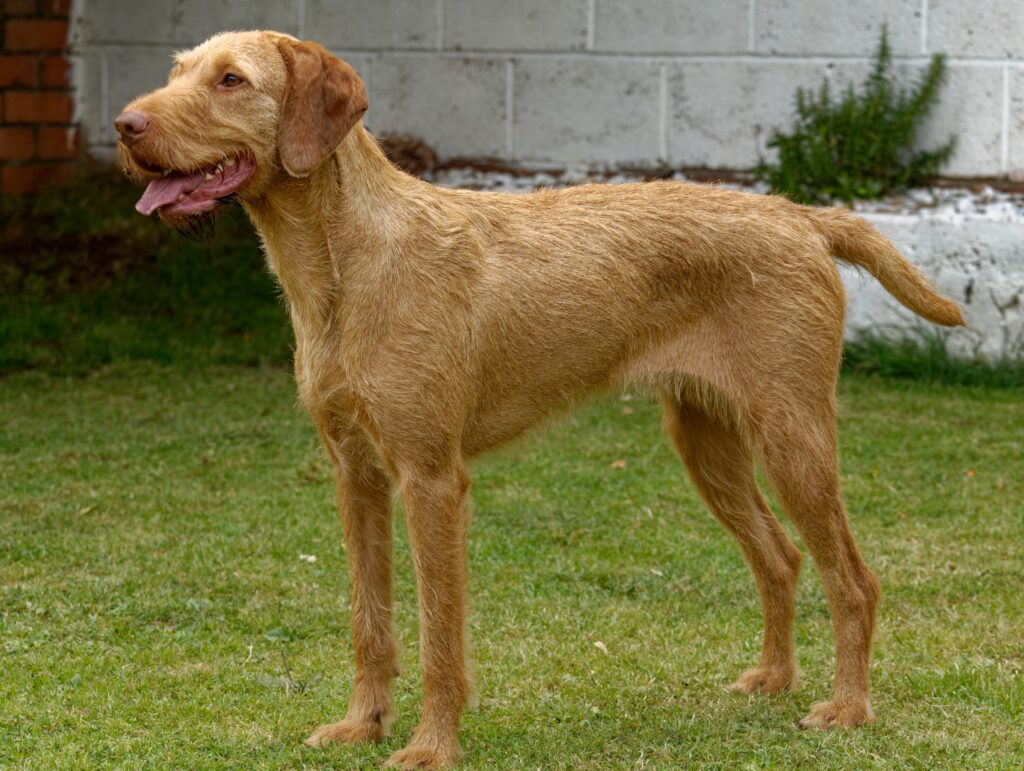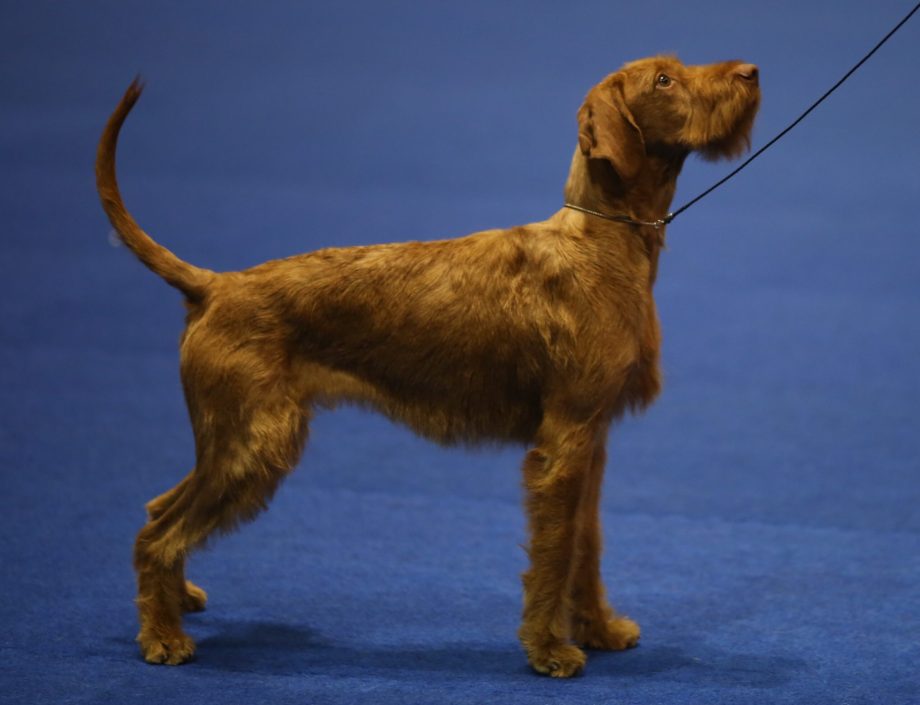The Hungarian Wirehaired Vizsla is an athletic, red-coated gundog, bred as a bird hunter. It is a close relative of the Hungarian Vizsla.
It is can be distinguished from its smooth-coated cousin by its dense, wiry coat and shaggy beard and eyebrows. It is also slightly taller and heavier than the smooth-coated variety. In other ways, it is much the same, with nose and eyes that blend with their russet gold coat. Vizslas are very active and intelligent dogs that require plenty of physical and mental stimulation. They are also very people-orientated and form close bonds with their owners, preferring not to be left alone for too long, although are generally calmer and less needy than the smooth-coated Vizsla. Their gentle nature makes them great companions for children, although beware, as a young Vizsla may be too boisterous and energetic for very small children. They also get on well with other dogs and even with cats, if raised alongside them. Caution should be taken with other small household pets due to their high prey drive. Vizslas need a minimum of two hours of exercise a day and will relish long walks, runs and endless games of fetch. With their active brains, they will also enjoy gentle training and fun puzzle games. With their athleticism and stamina, they are perfectly suited as a running companion, which will also help to use up some of that energy. For active owners and families, that are able to spend lots of time exercising and simply being with their dog, the Vizsla will make a devoted and loving companion.

History
The Hungarian Wirehaired Vizsla shares much of its history with the Hungarian Vizsla, although became its own breed in the early 19th Century. Vizsla-type dogs travelled with the Magyar tribes from the Steppes of Asia in the 9th Century, when they invaded Western Europe, eventually settling in Hungary. Over the following centuries, Hungarian nobility refined these swift red-coated dogs and used them as hunting dogs across the Hungarian plains. The Wirehaired Vizla was developed to have a tougher coat than its smooth-coated variety allowing it to hunt in colder conditions or rough cover. This was achieved by crosses with the German Wirehaired Pointer. and German Pointer breeds.





